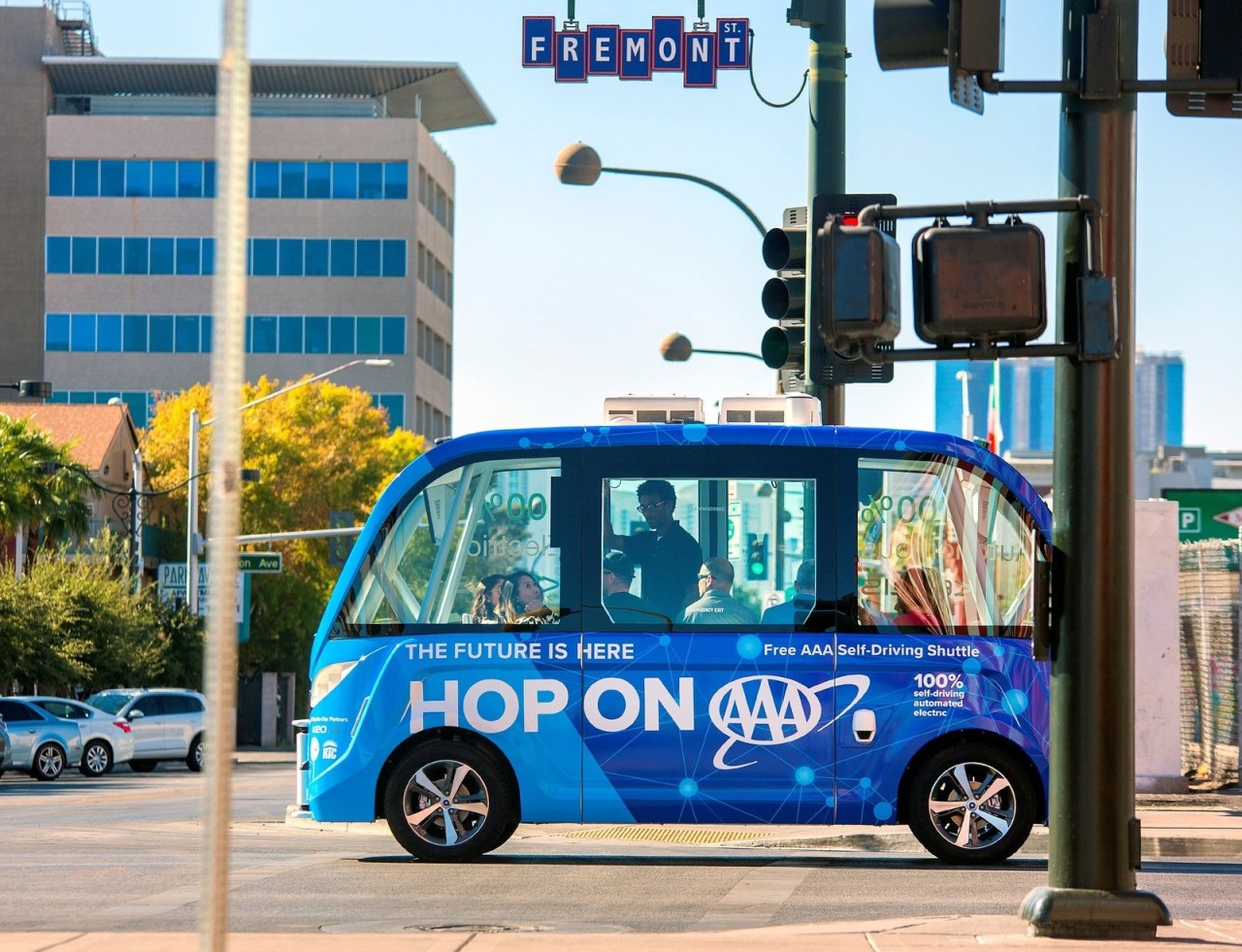In the high-stakes world of autonomous vehicles, the launch of a driverless shuttle in downtown Las Vegas was meant to shine a spotlight on innovation, technology, and the future of urban transportation. However, mere hours after taking to the streets, the egg-shaped Navya shuttle found itself in a minor fender bender with a semi-truck. While no passengers were injured, this incident raises pressing questions about the efficacy and safety of autonomous systems.
The Incident: A Quick Overview
Launched as part of a collaborative pilot between AAA and Keolis, the driverless shuttle was designed to navigate a half-mile stretch of the Fremont East “Innovation District.” Unfortunately, it was struck by a semi-truck that was backing up, catching passengers by surprise. Comments from one bewildered rider encapsulated the collective concern, stating, “We were like, ‘oh my gosh, it’s gonna hit us,’ and then… it hit us!”
Understanding the Technology Behind the Shuttle
- Obstacle Detection: The shuttle comes equipped with advanced sensors that registered the truck, allowing it to stop and avoid a more catastrophic accident. But that alone raises questions: is simple avoidance enough in an unpredictable urban environment?
- Movement Capabilities: The key issue presented by this incident seems to be the shuttle’s inability to move out of the way, demonstrating a fundamental gap in responsive action in the face of imminent danger.
Responses and Reactions: What They Mean for Autonomous Futures
The City of Las Vegas released a statement asserting that the shuttle “did what it was supposed to do,” emphasizing that its sensors functioned correctly by detecting the truck. However, they also claimed that had the truck been equipped with the same advanced sensing technology, the accident could have been avoided. Critics may argue that instead of merely stopping, the shuttle ought to have the capability to take evasive actions to ensure passenger safety.
This raises a pivotal consideration for autonomous vehicle designers: while safety systems are crucial, a one-dimensional response to threats can lead to dangerous situations. The necessity for multifaceted reaction strategies becomes clearer when examined through the lens of this mishap.
Lessons in Communication and Public Perception
The immediate aftermath of this incident poses significant challenges for public perceptions of driverless technology. What should be a smooth introduction of an innovative transport system quickly turned into a cautionary tale about technology shortcomings. It emphasizes the vital role transparent communication plays as we transition toward autonomous solutions.
A positive takeaway, however, is that testing continues, allowing developers time to iterate and improve functionalities. With each trial comes a wealth of data that can inform better practices for safer autonomous travel.
Conclusion: The Road Ahead for Autonomous Vehicles
As we move further into an age of automation, incidents like the Las Vegas fender bender illustrate that while we are on the precipice of a transformative technology, there remain hurdles and challenges that must be addressed. Ensuring the safety, reliability, and responsiveness of these systems is paramount for public acceptance and practical implementation. The fender bender was not merely a minor accident—it served as a reminder of the inherent uncertainties present in developing cutting-edge technology.
At fxis.ai, we believe that such advancements are crucial for the future of AI, as they enable more comprehensive and effective solutions. Our team is continually exploring new methodologies to push the envelope in artificial intelligence, ensuring that our clients benefit from the latest technological innovations.
For more insights, updates, or to collaborate on AI development projects, stay connected with fxis.ai.

